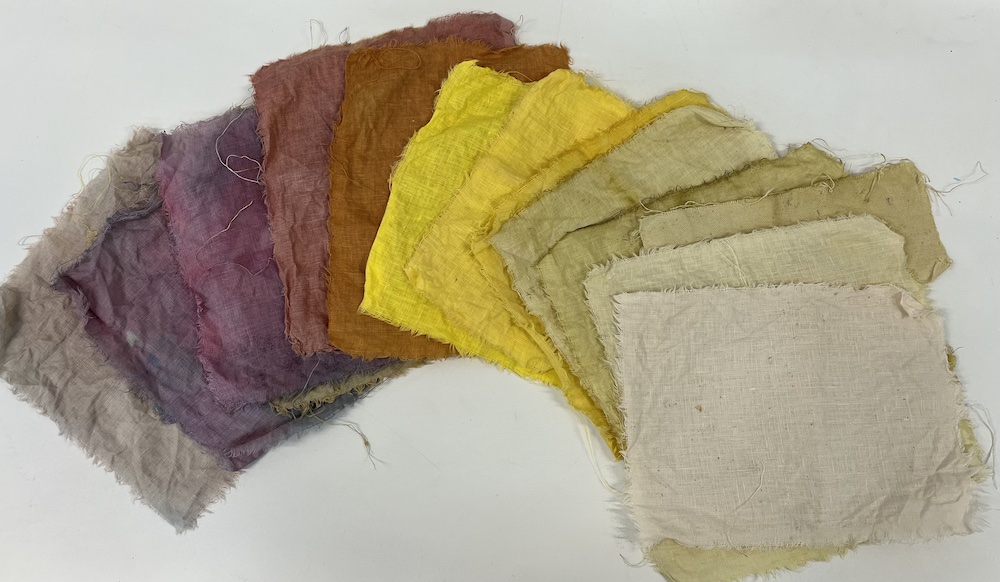4. Biochromes¶
ASSIGNMENT WEEK4¶
- Produce at least one natural dye or bacterial dye:
- Natural dye - modifying it’s colour and mordanting it in different ways to dye at least 2 different categories of fibers
- Bacterial dye - Explored dyeing with bacteria of different fibers and/or bacteria
- Produce at least one botanical or bacterial ink:
- Botanical Ink - explore different materials, recipes and understand how to adjust them based on the ingredients
- Bacterial Ink - explore bacteria solvents and understand how to adjust or use the inks
- Document your recipes, the ingredients and process and if there have been changes, document your unexpected discoveries
- Name your materials, classify them by typology and display them in a systematic order of samples. EXTRA POINT Submit some of your swatches to the analog material library of your lab. (20cm *20cm aprox)
Inspirations :¶
I was quite inspired by the work of Louise Deltrieux, she is a friend who develops a lot of artistic installations and films related to nature and uses craft as material. She has done a lot of work on natural dyes that I find very beautiful.

I am also quite inspired by links between the biomaterial craft and feminism. The work of Marie Louise Juul is very inspiring in building pads for menstruation based on that. Works around feminism and biomaterial craft
Preparing the material¶
I started by using protection :
| The setup | More images |
|---|---|
 |
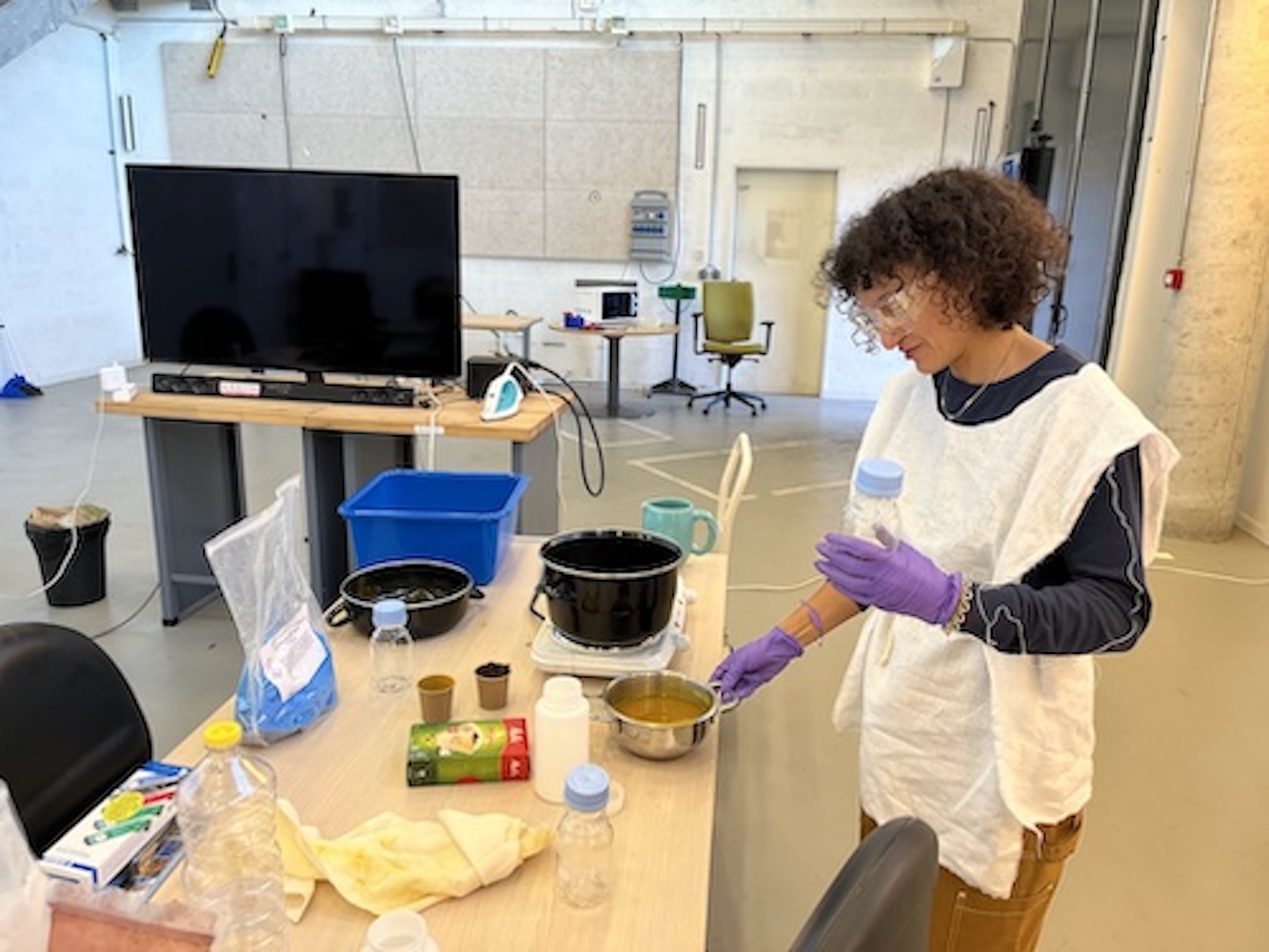 |
| Preparing the material | More images |
|---|---|
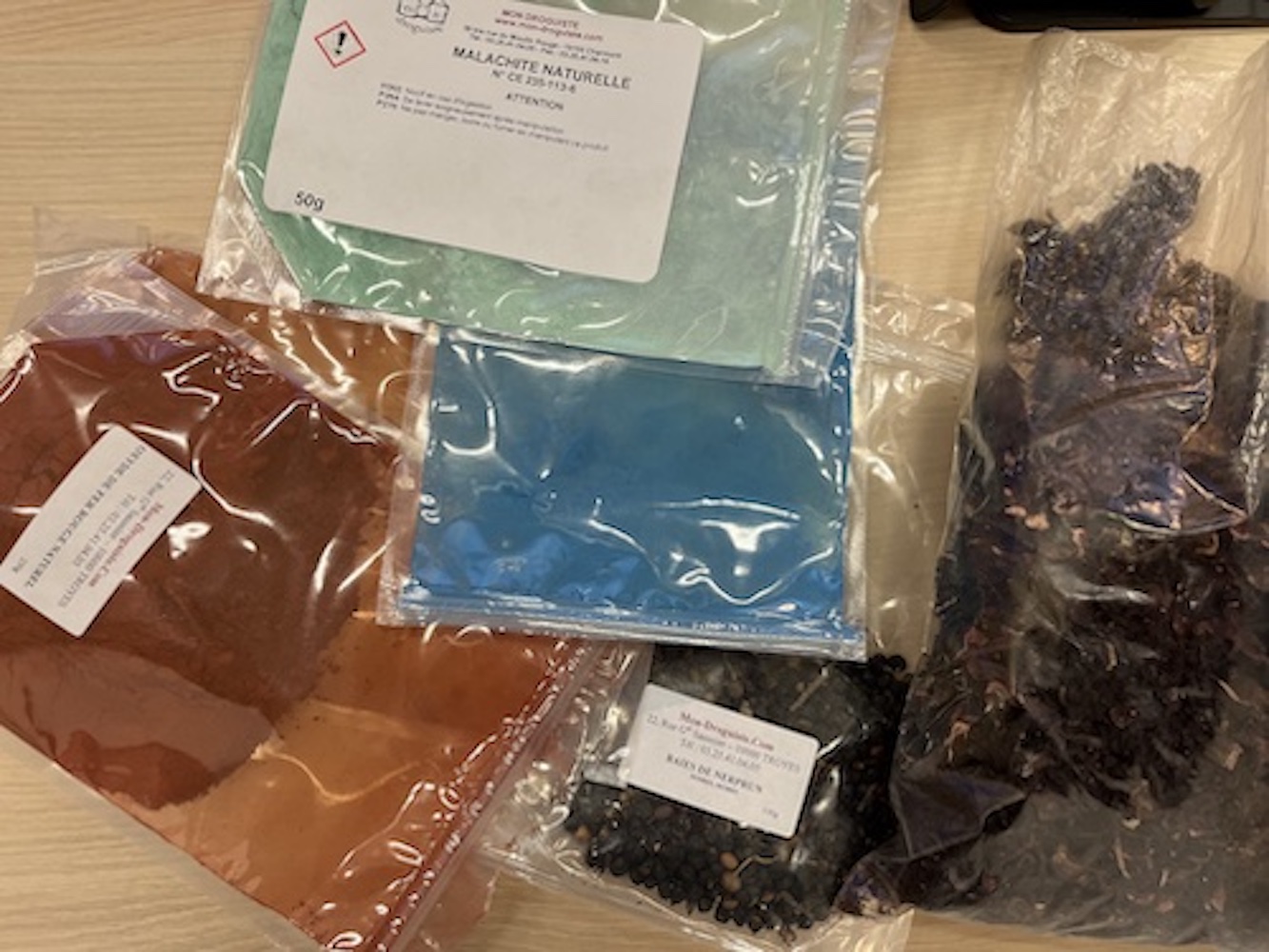 |
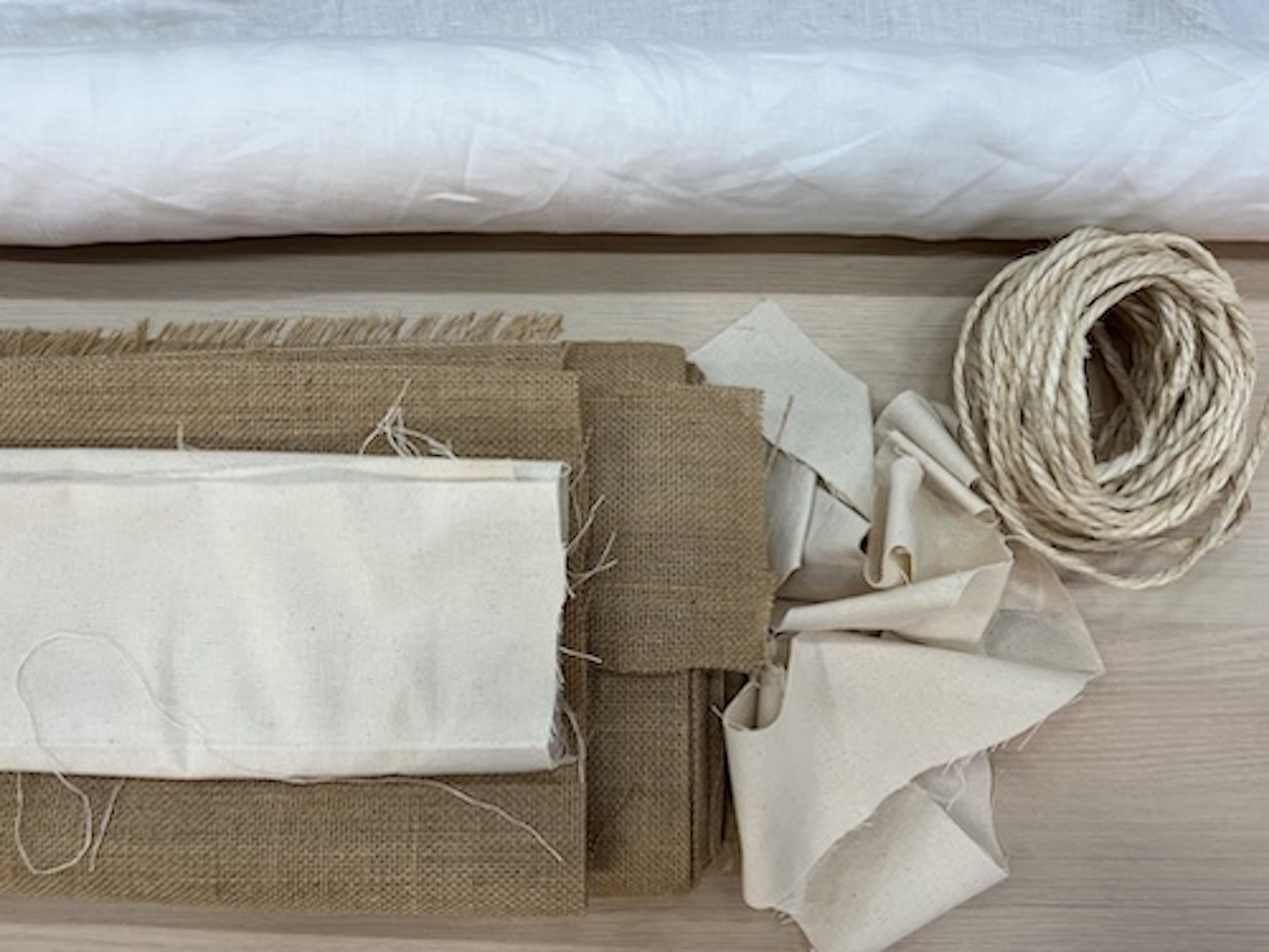 |
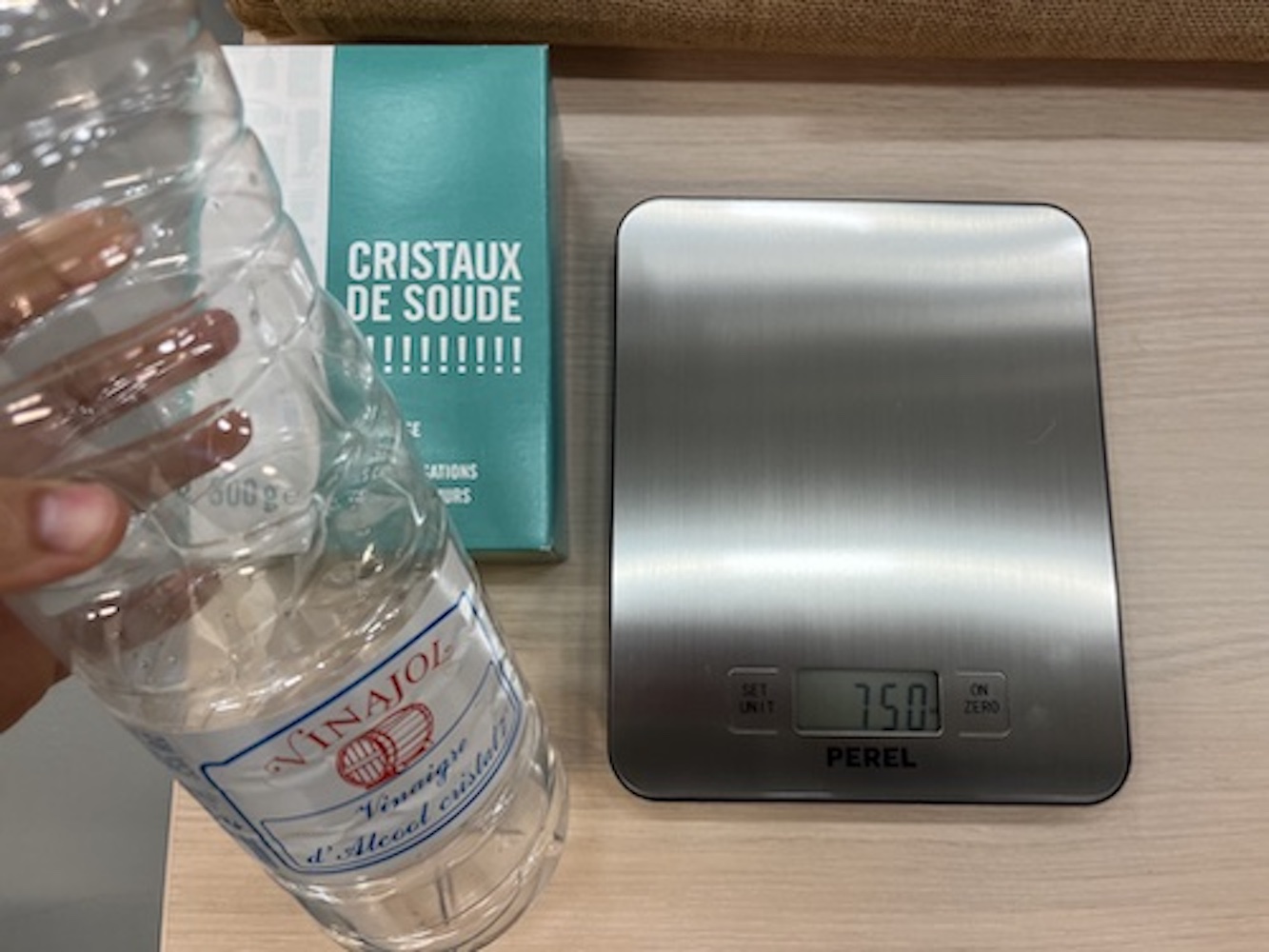 |
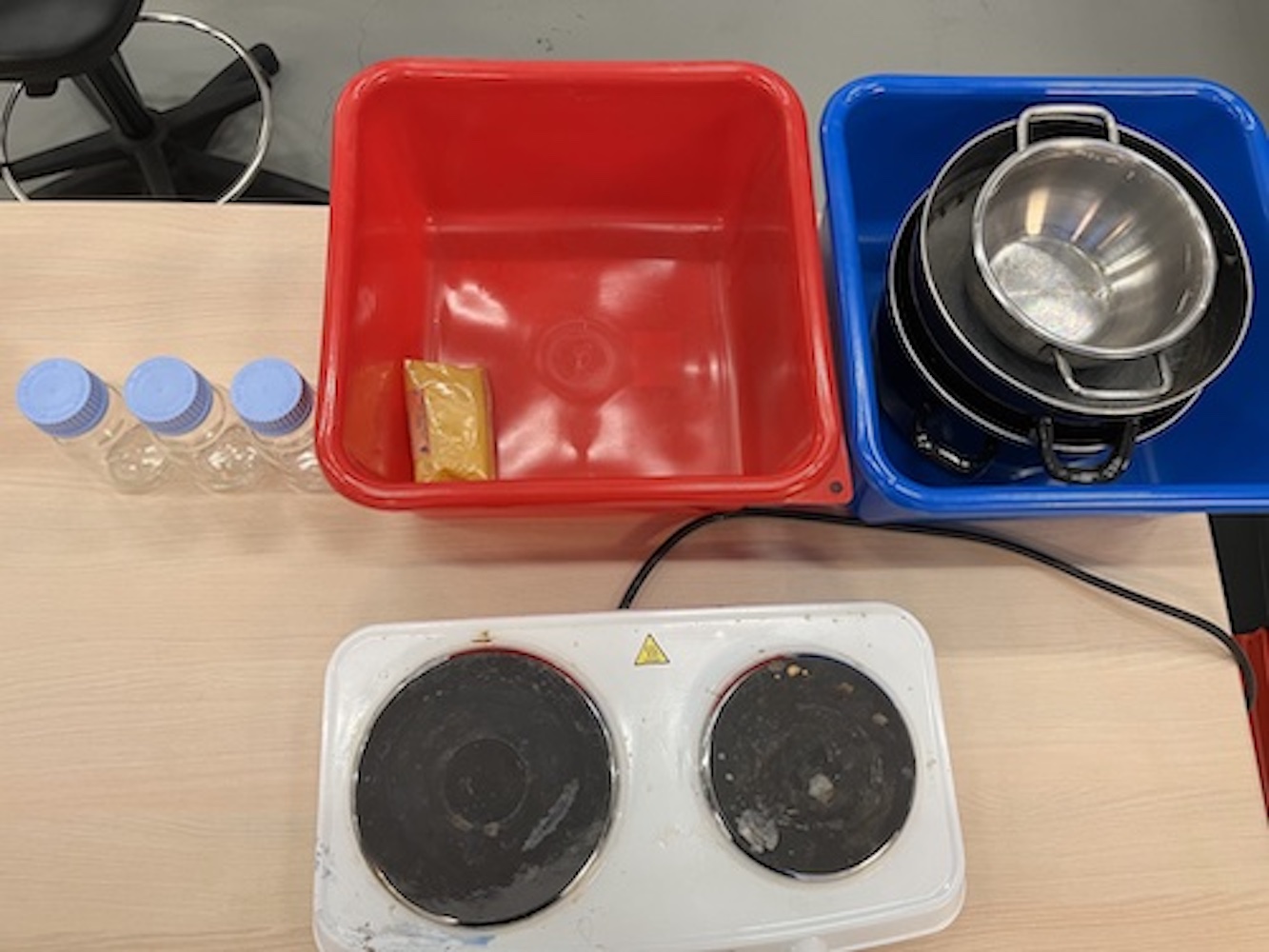 |
 |
Dying with Tumeric¶
- First I weighted the Fabric. I used cotton squares.
- WOF of each square is approx 7g.
- I used 4 squares for the tumeric with is a total WOF 28g.
- I took an amount of tumeric that is 1/8 WOF = 3.5g
- I made a paste
- There was no need to use mordant with tumeric.
- I added hot water to the tumeric paste and then dyed the fabric in it.
| Recepi for tumeric | More |
|---|---|
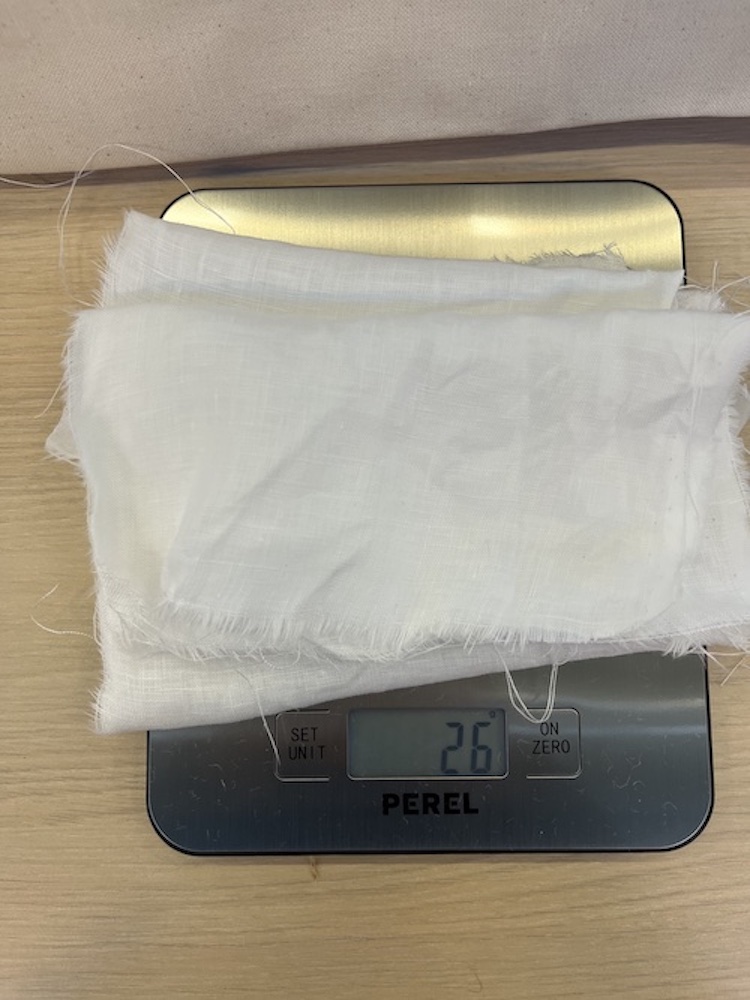 |
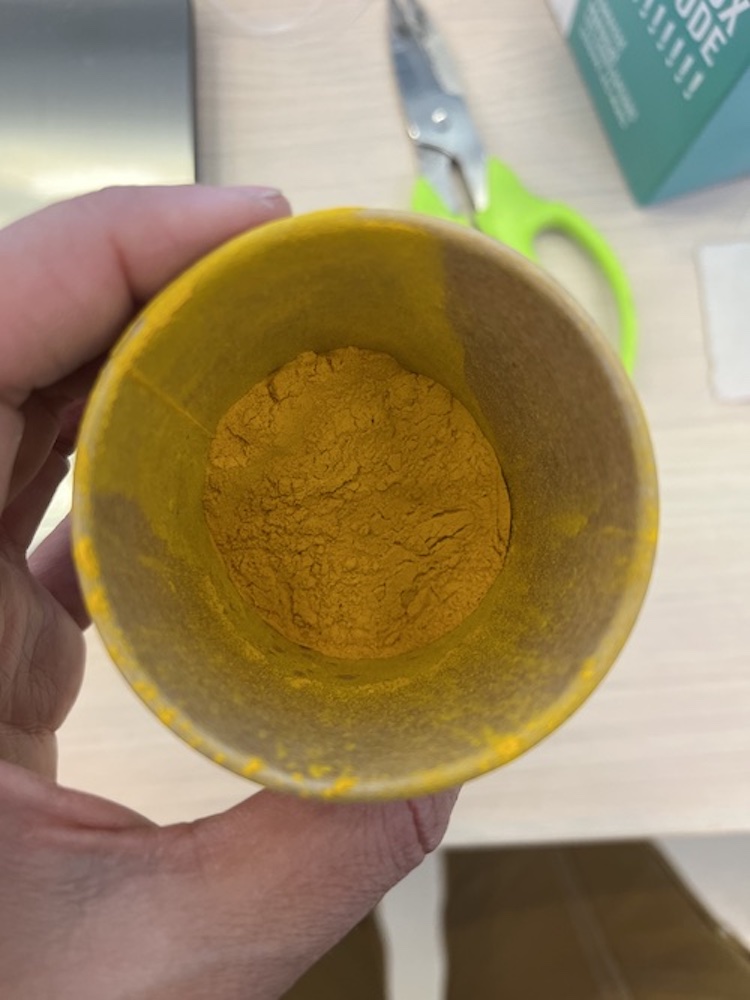 |
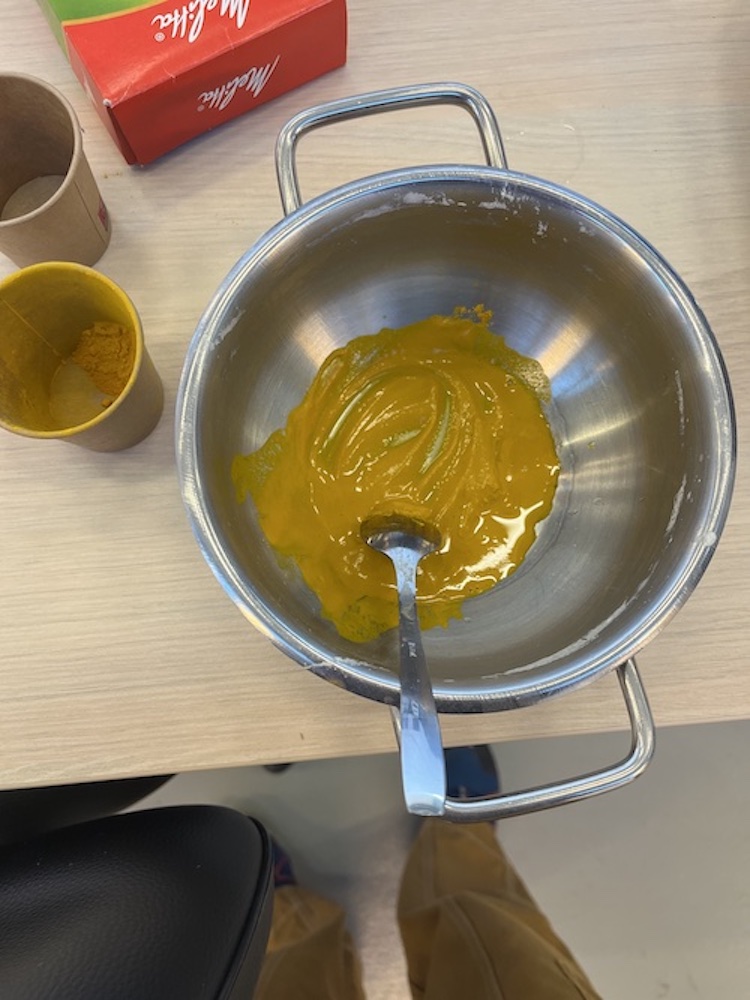 |
Using modifiers¶
I used soda and vinegar with hot water to modify the color, the result is red for soda and bright yellow with vinegar.
| Modifying with soda | Modifying with vinagar |
|---|---|
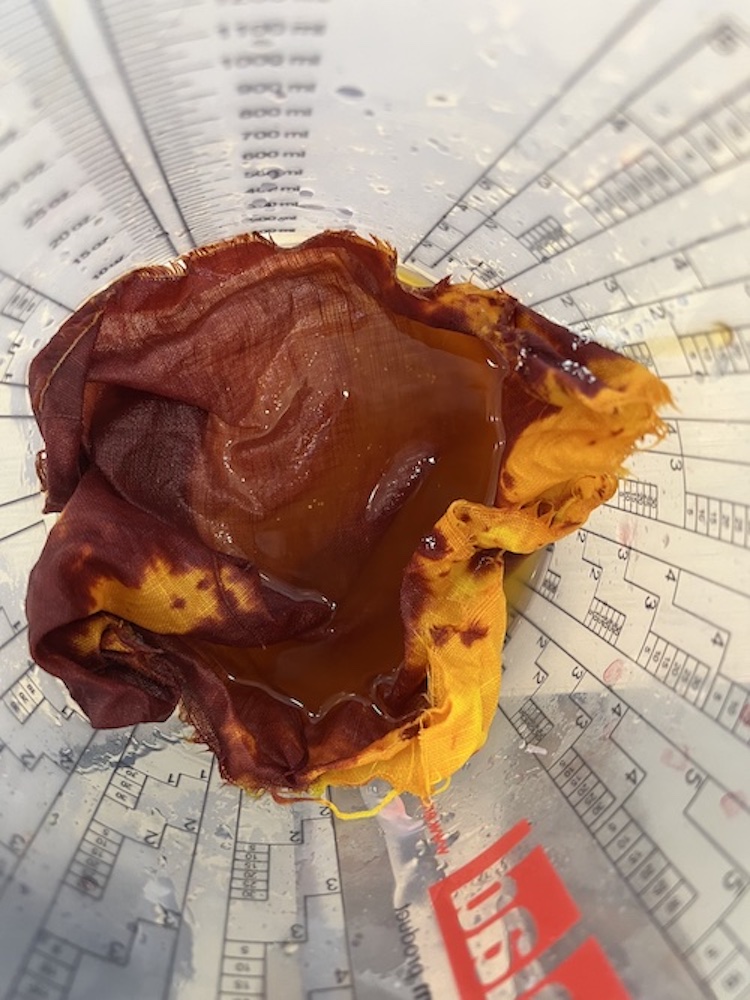 |
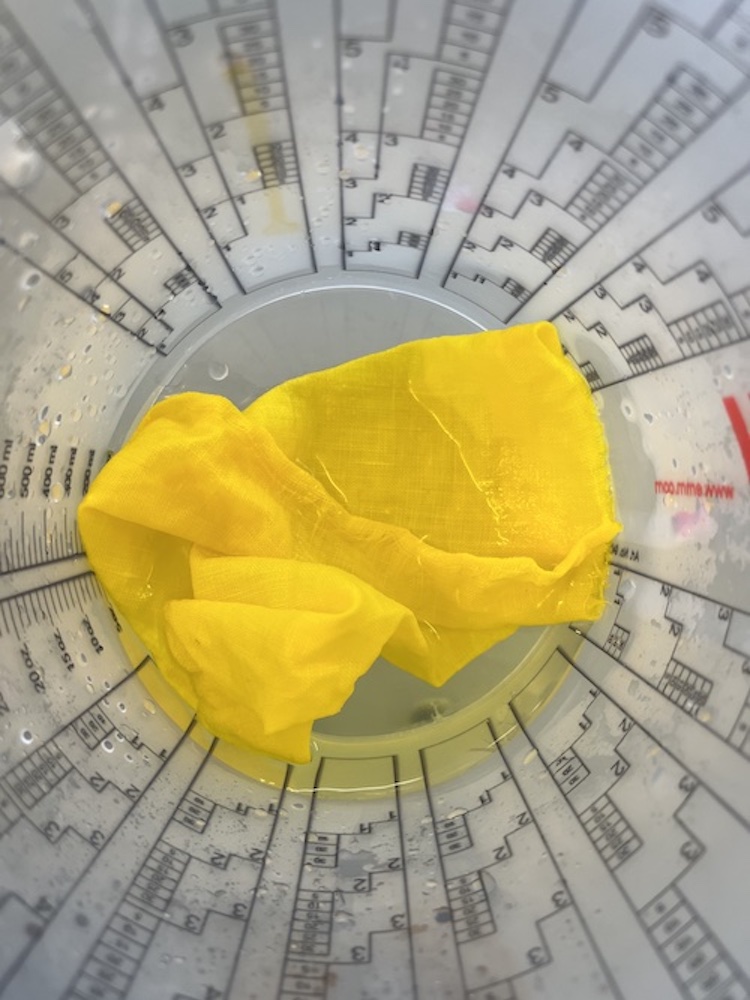 |
Modifying with iron: I used 70g of sulfate of Iron with 1L of hot water. The result is sadden version of the tumeric color.
| Modifying with Iron | The material used |
|---|---|
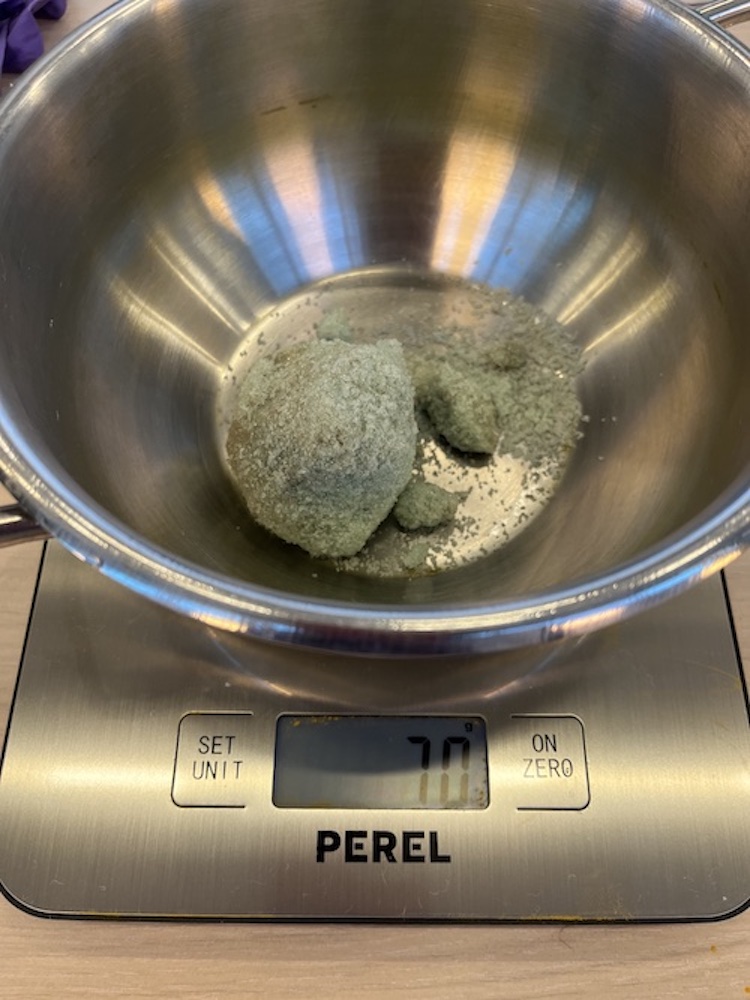 |
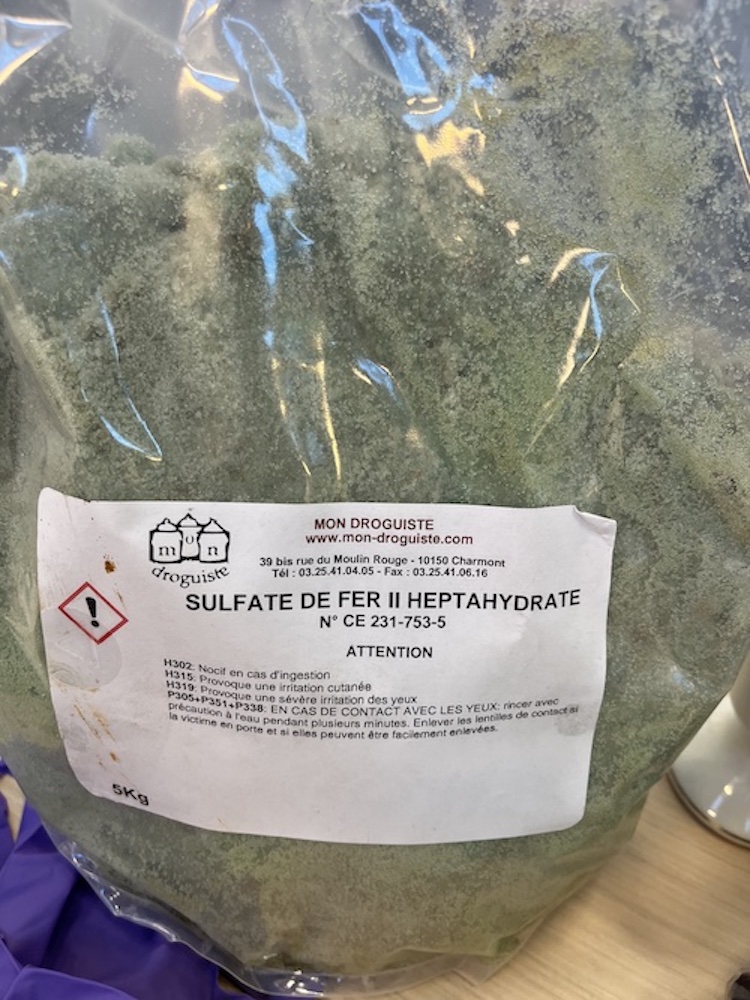 |
 |
Precipitating tumeric¶
- I added alum then Soda, 2 parts alum, 1 part soda in seperated jars
- I mixed them with hot water until dissolved. I added the alum then the soda while stirring. This process is meant to seperate the pigment.
- I stirred a little and then let it rest.
- I then filtered it with coffee filters. I obtained a hydrated pigment.
- I then added arabic gum that was in powder and that I had to liquefy with hot water first.After stirring carefully, I obtained a nice water color ink of an rusty color.
| Making ink | More images |
|---|---|
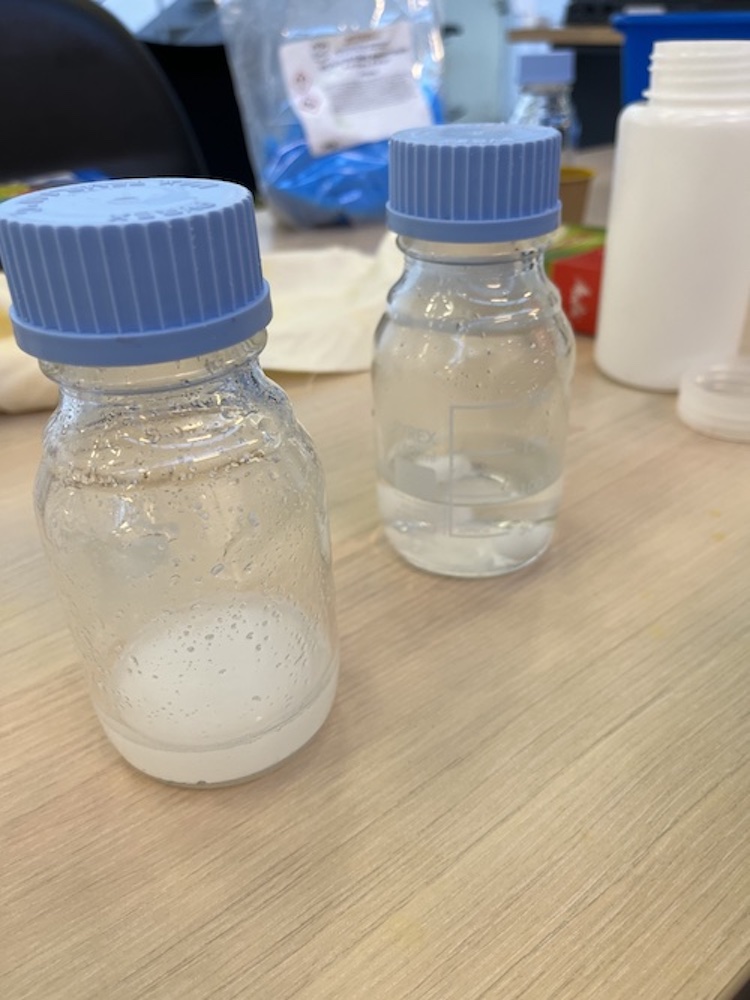 |
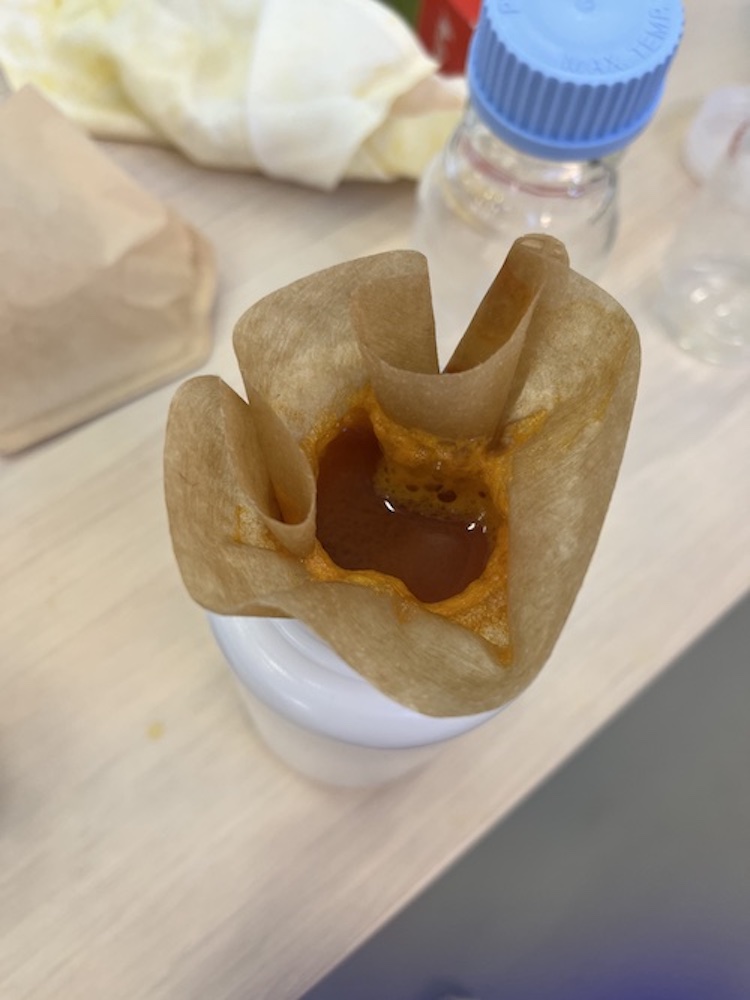 |
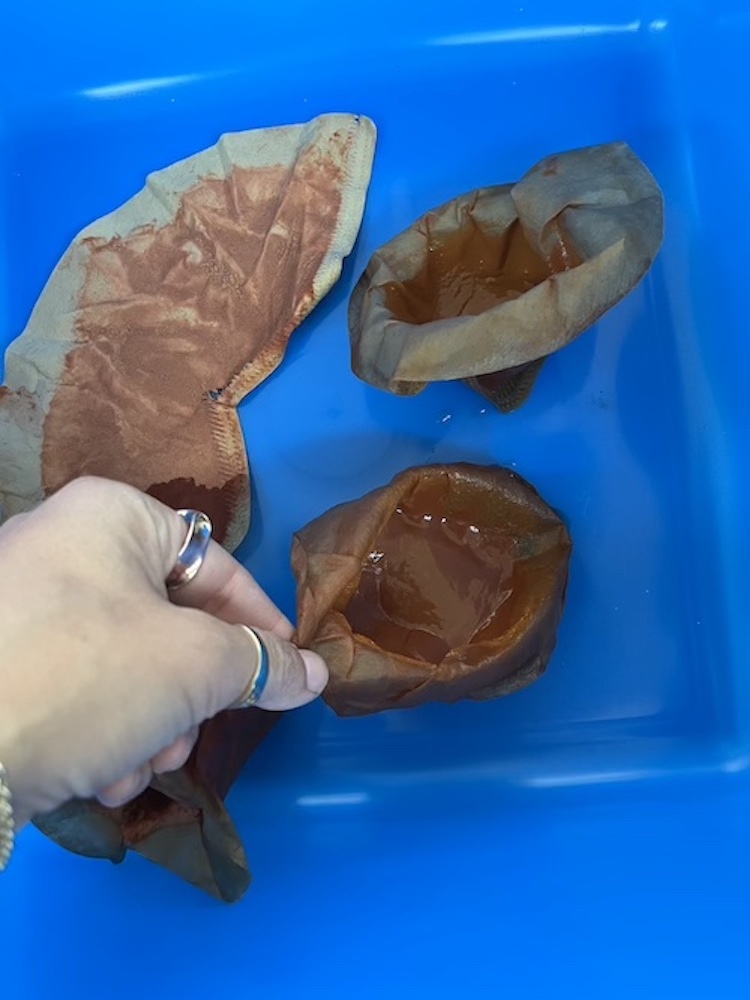 |
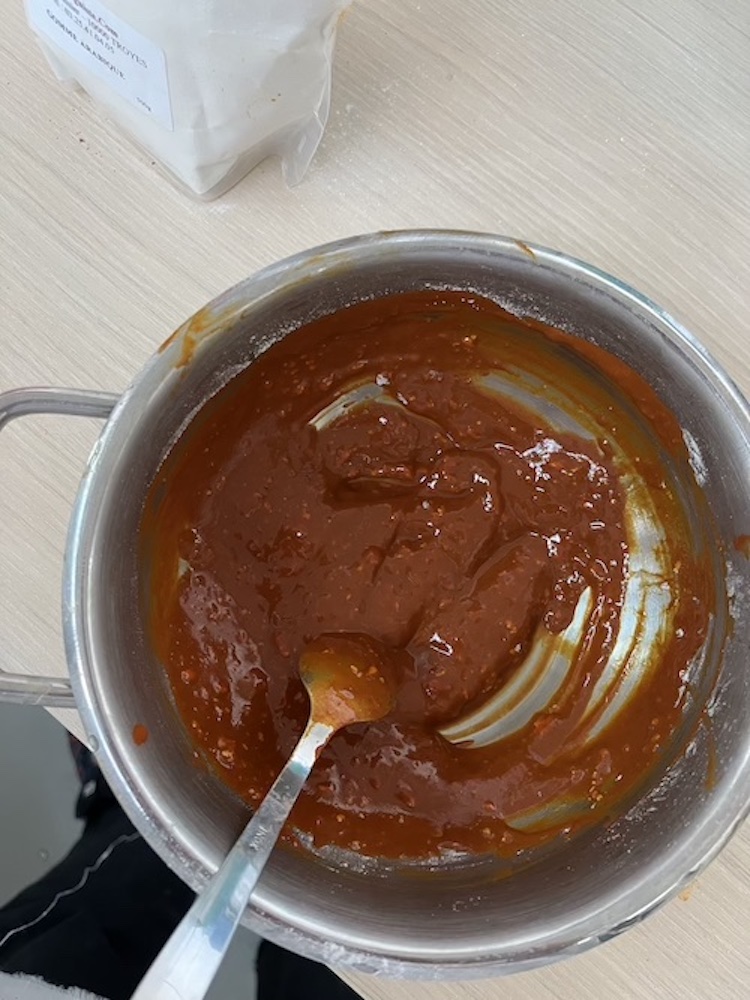 |
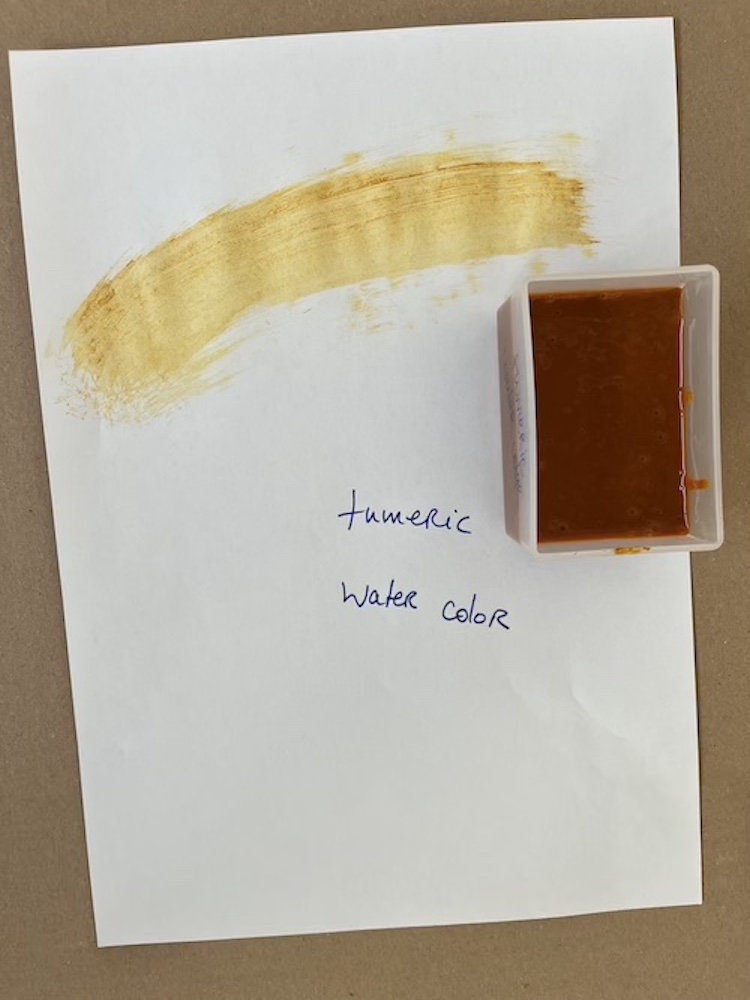 |
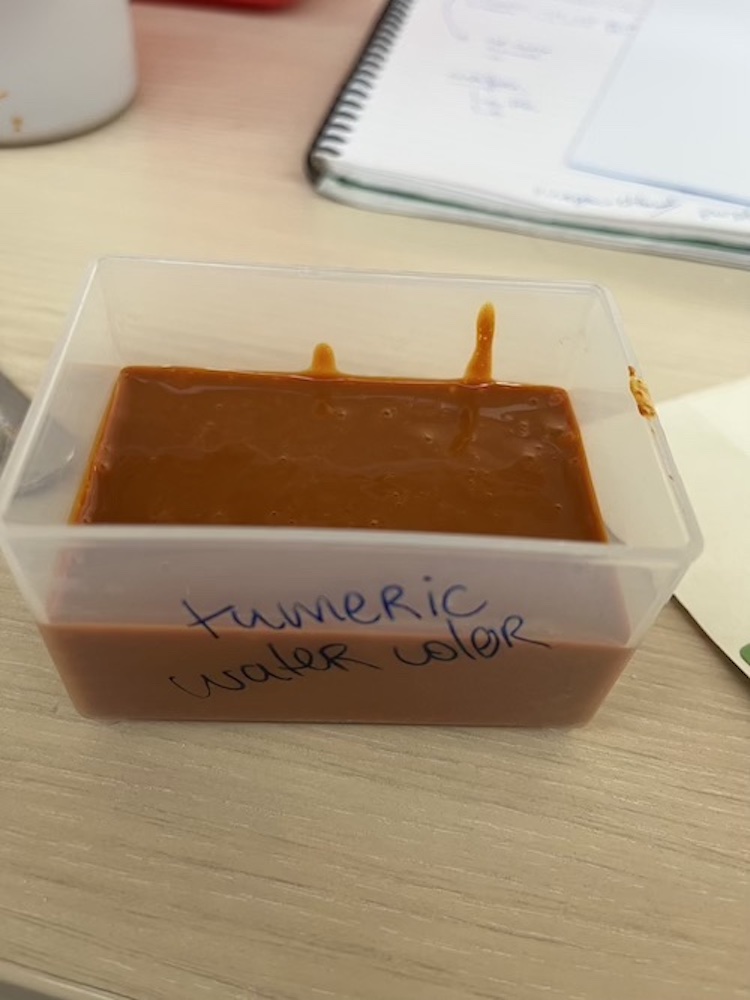 |
Dying with Hybiscus¶
- I used 5 squares of cotton total WOF = 28G
- I used mordant to Mordate the fabric with Alum of a quantity of 15% WOF = 4.2g
- I simmered the fabric with the alum in water for 1h.
- In parallel, I used an amount of hybiscus 1/4 WOF = 7g.
- I boiled the hybiscus in enough water for 30min.
- I then strained the flowers, then added the mordated fabric and stirred for 45min. I then left it to soak for a full day.
| Dying with hibiscus | More images |
|---|---|
 |
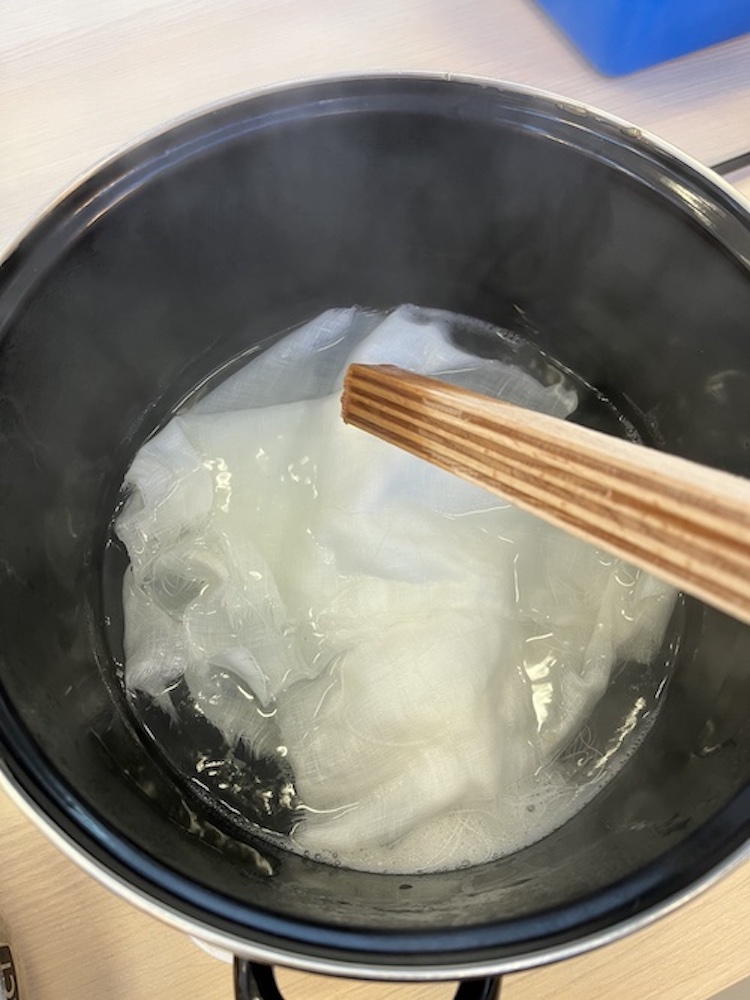 |
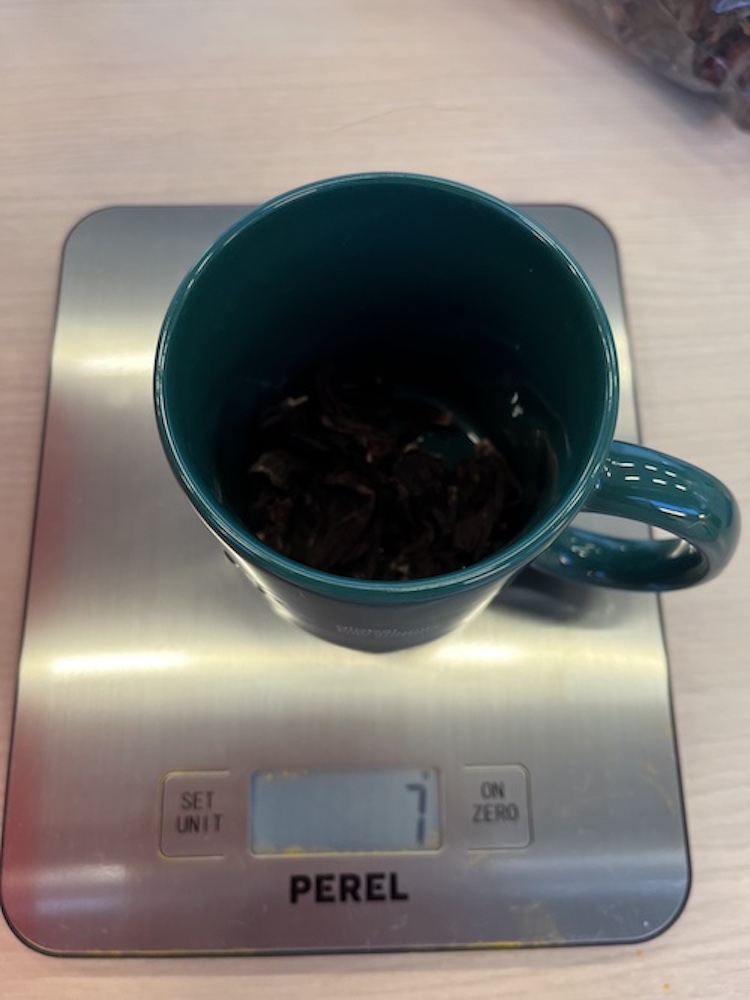 |
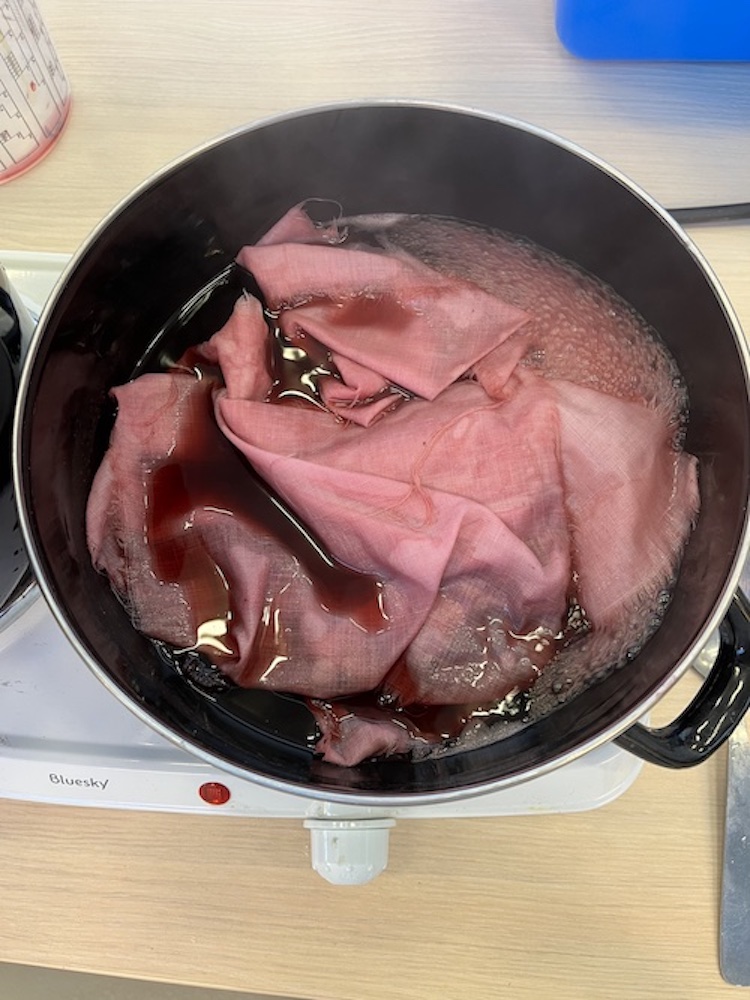 |
Using modifiers¶
I used soda and vinegar with hot water to modify the color of the hybiscus dye as well as iron in the same quantity than for tumeric (70g with 1L of hot water).
The soda made the hibiscus dark grey, the vinegar didnt modify it and the iron also made it sadden in a light grayish / green color.
| Modifying hibiscus dye | More images |
|---|---|
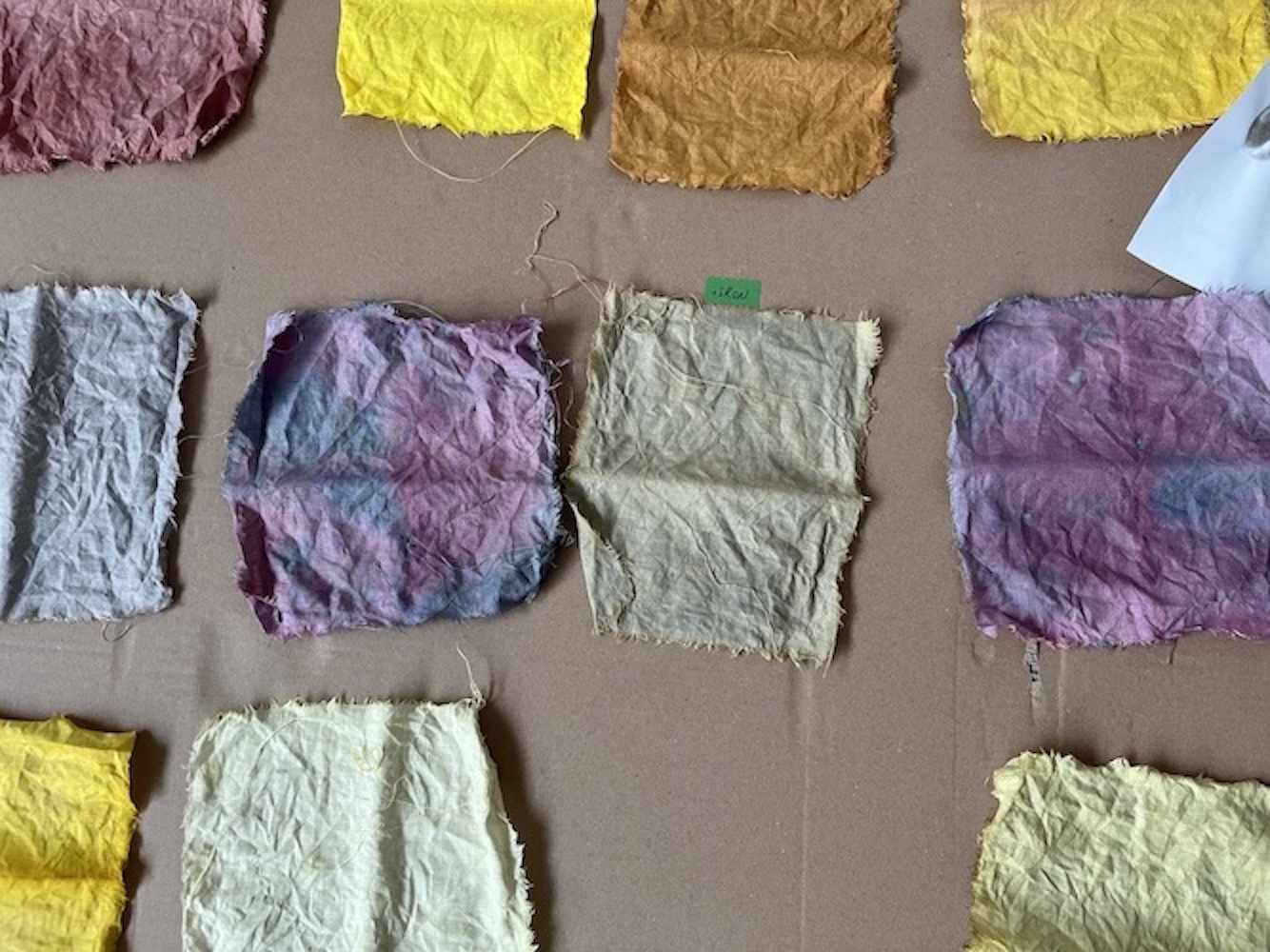 |
 |
Precipitating Hybiscus¶
- I added alum then Soda in order to form the pigment. 2 parts alum, 1 part soda in seperate jars I mixed until dissolved.
- I added the alum then the soda while stirring.
- I stirred a little and left it to rest and then filtered it with coffee filters.
- I then added arabic gum that was in powder and that I had to liquefy with hot water first. I obtained a nice water color ink of a gray shade. I have added more water than with tumeric and the result is more watery less pasty color ink based on hibiscus. I also get the leftover recycled hibiscus dye.
| Making ink | More images |
|---|---|
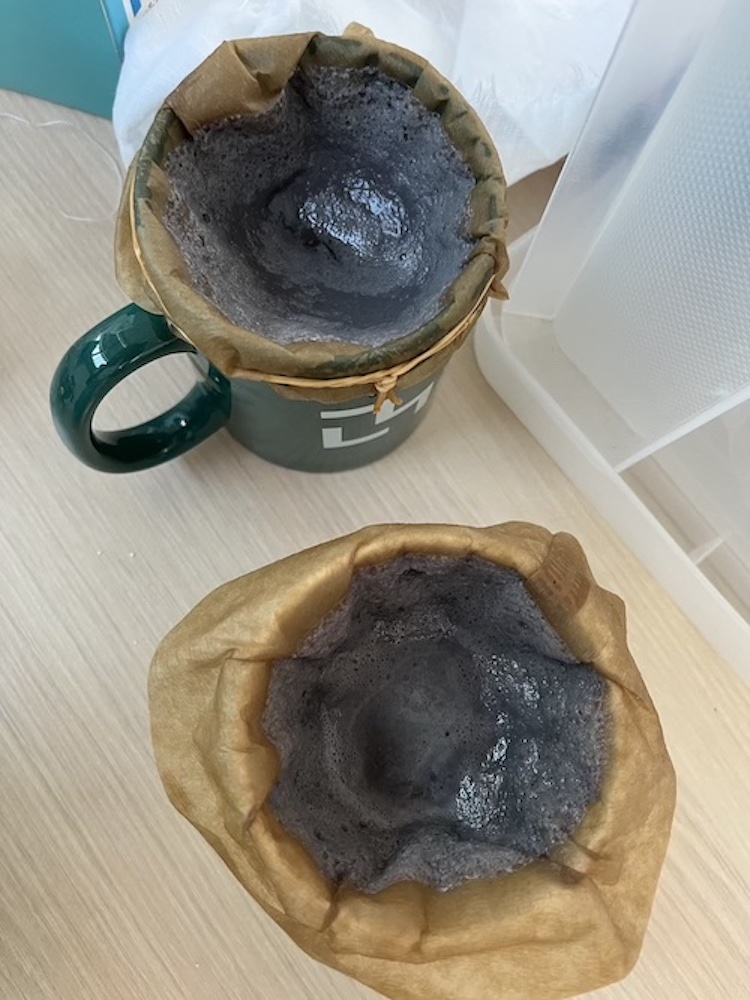 |
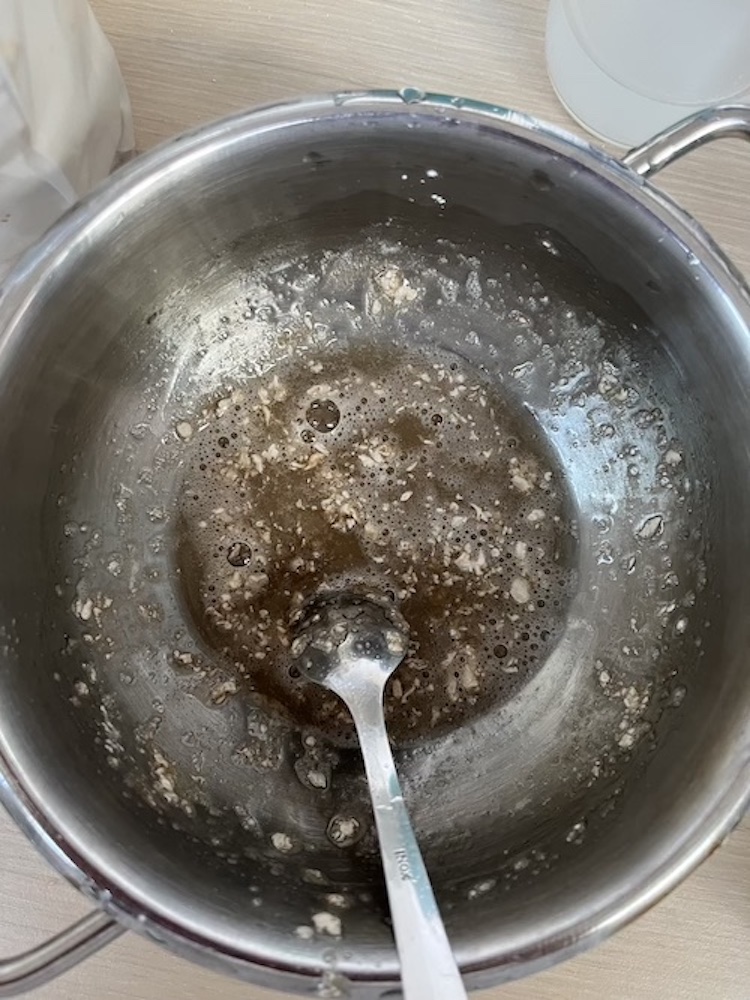 |
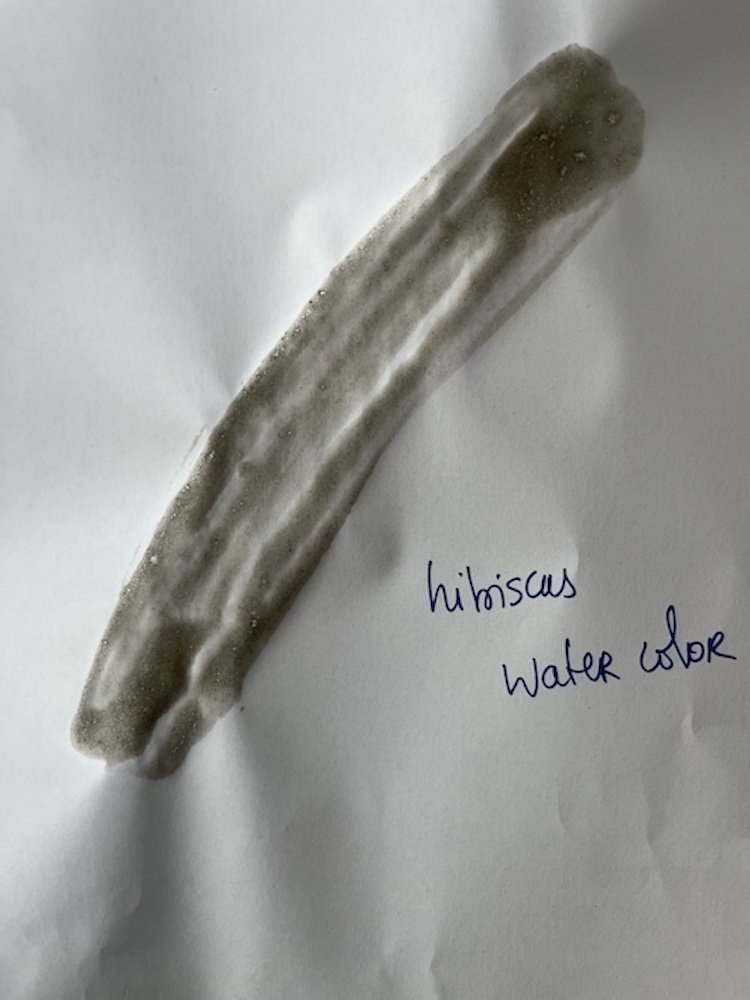 |
 |
Dying with Buckthorn¶
- I used the same squares of which WOF of each square is approx 7g. I used 6 squares for the Buckthorm so a total WOF of 42G
- I took an amount of Black Buckthorn that is 100% WOF = 42g.
- I boilled it with enough water for 30 min. 4.In paralel I had to mordate the fabric with Alum 15% WOF = 6.3g.
- I simmered the fabric with the alum in hot water for 1h.
- I strained the seeds, then added the mordated fabric and stirred for 45min.
- I used a batch right away and left 3 sheets of coton to soak for the weekend.
| Dying with Buckthorn | More images |
|---|---|
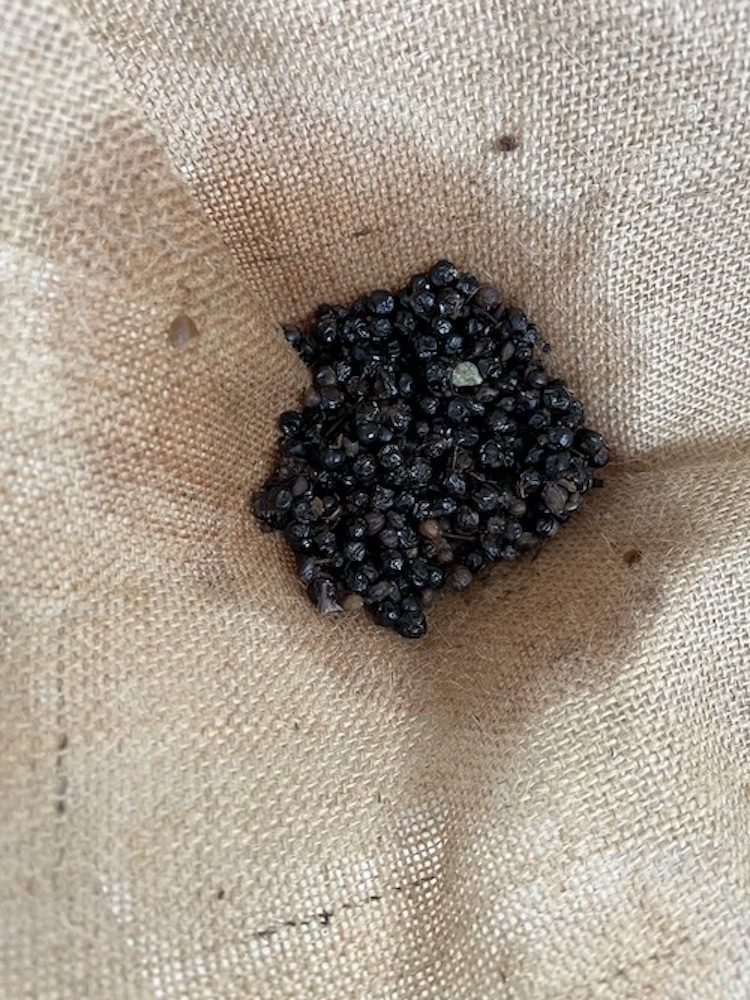 |
 |
Using modifiers¶
I used soda and vinegar with hot water to modify the color, the result is very yellow for soda and bright beige with vinegar.
| Modifying with soda | Modifying with vinagar |
|---|---|
 |
 |
Modifying with Lime. I added a full lime to modify the dye. The result is suprisingly sad beige.
I also dyed two other fabrics, a different type of cotton and burlap. The result is not drastically different...
| Modifying with lime | On various fabrics |
|---|---|
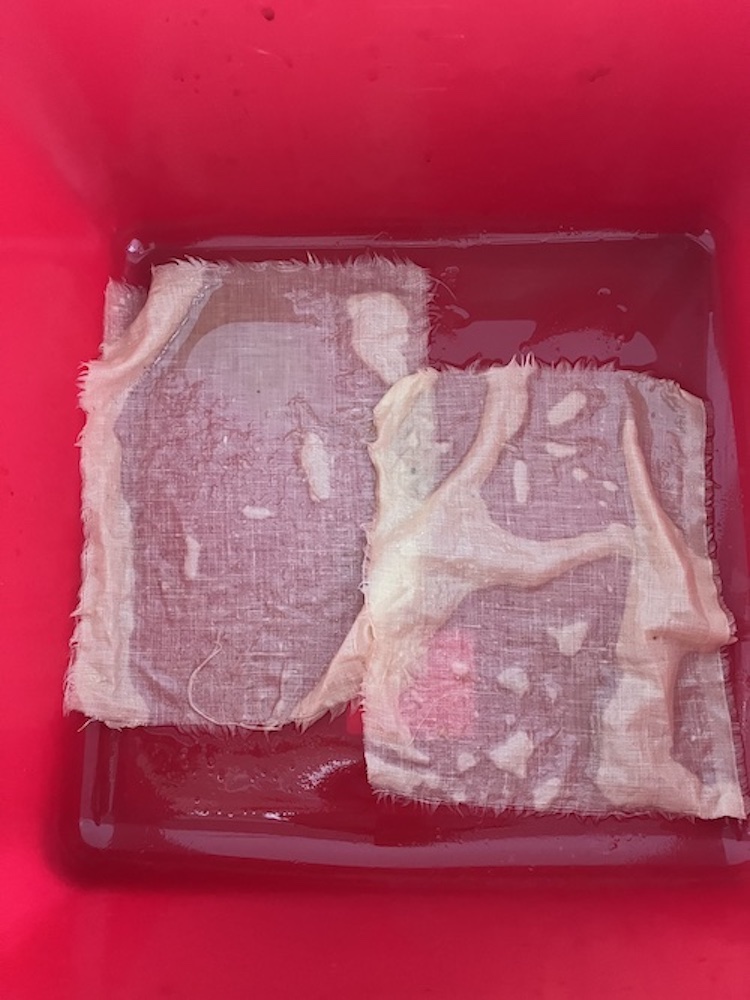 |
 |
Here is an overview of the process for my color study :
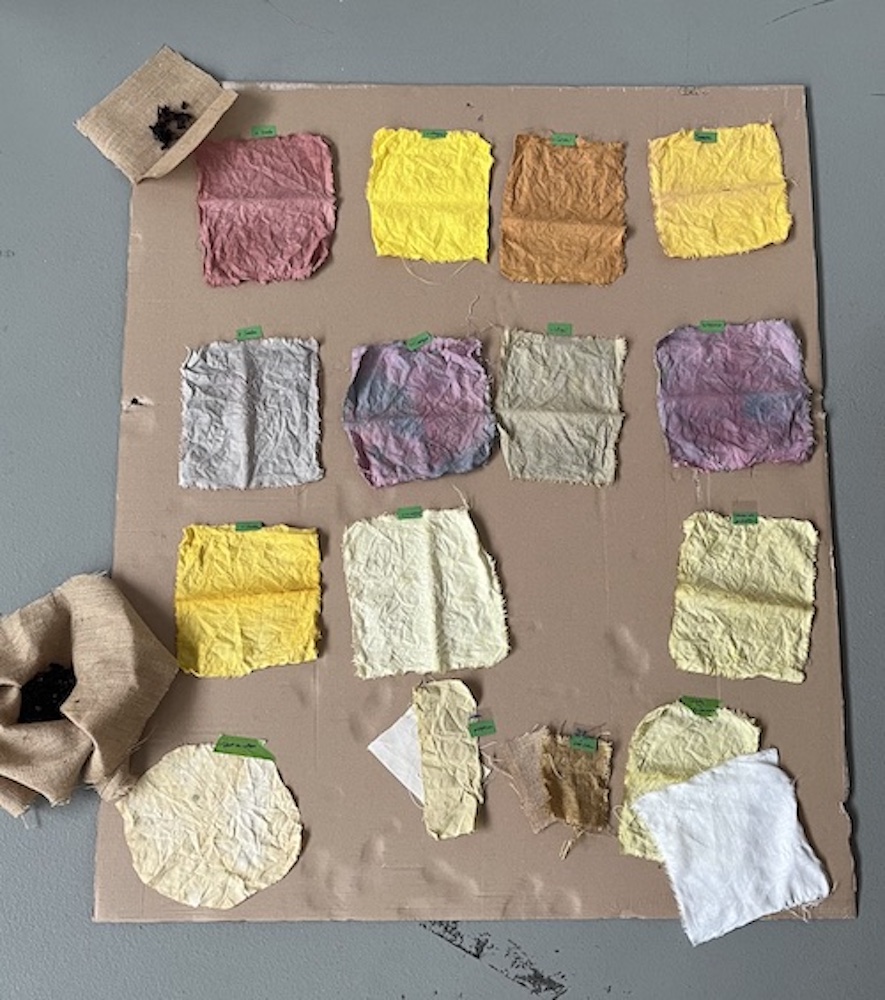
And an image of all the shades that I obtained:
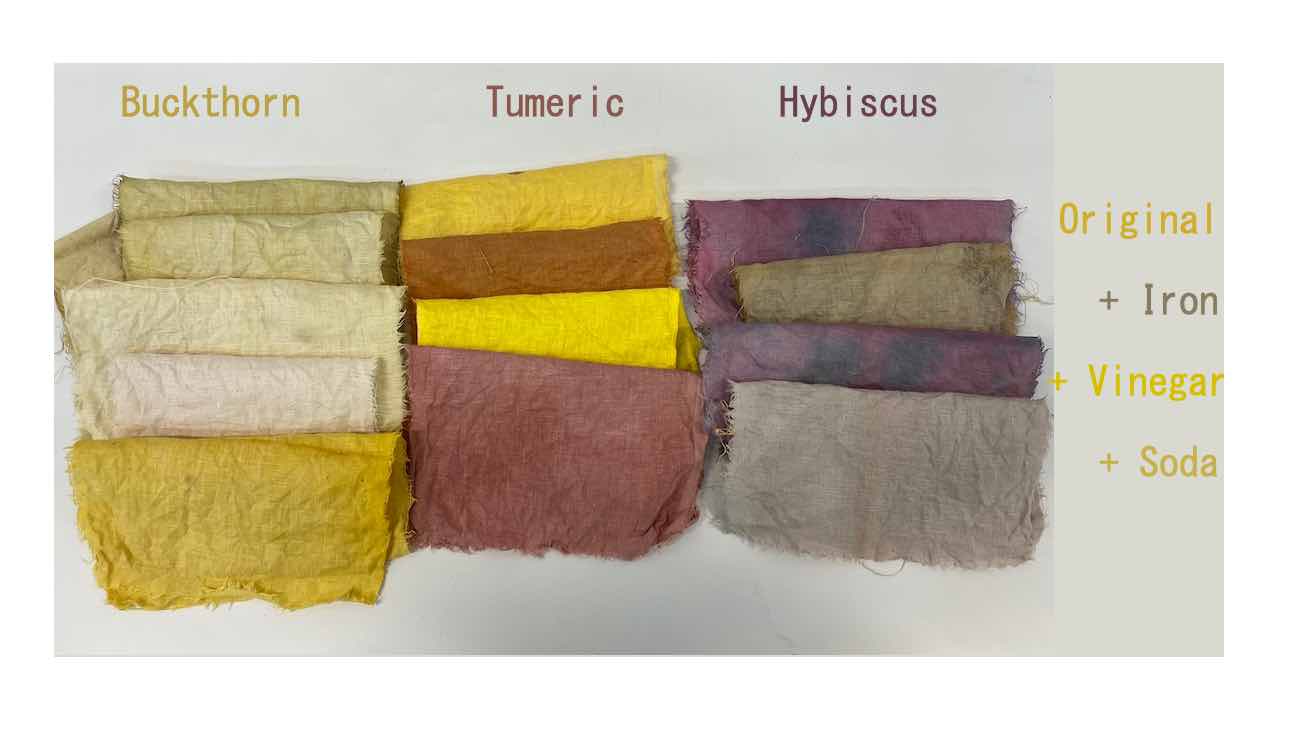
A comparison of all :
